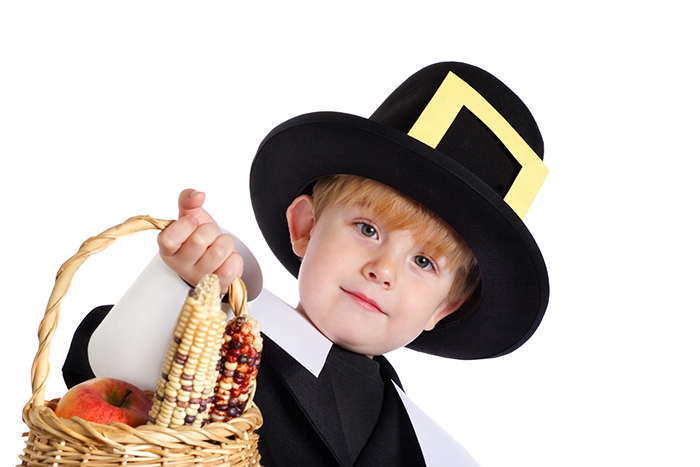
25 Nov PURITANS AND PILGRIMS AND THANKSGIVING
With Thanksgiving upon us, the time has come for kids to dress up like Pilgrims and the Charlie Brown television special to air once again. Though widely dismissed and despised, the Pilgrims (also known as the Puritans) remain one of the greatest expressions of biblical Christianity the world has ever known.
THE STRUGGLE FOR A PURE CHURCH
Puritanism was sparked by many years of conflict in England, where the Church of England vacillated between Catholic and Protestant practices depending upon which king or queen was ruling at the time. For example, many Protestant Christians and pastors were driven out of England during the reign of Queen Mary I, who burned Protestant pastors.
Following Queen Mary’s death, Queen Elizabeth promoted Protestantism, welcoming back to England exiled pastors who had been trained by the great Reformation pastor John Calvin. Elizabeth’s lengthy reign (1558–1603) eventually turned bloody as Protestants and Catholics fought for the soul of the church and the nation.
The Puritans sought to reform the Church of England from within by purifying it from Catholic superstition and tradition via a return to Scripture. Meanwhile, King James I assumed the throne and opposed every Puritan reform effort—with one exception, namely, the printing of the now-legendary 1611 King James Version of the Bible.
BUILDING A NEW WORLD
Despite hardship and persecution, some Puritans were patiently determined to incrementally work for reform within the Church of England. Other Puritans, however, grew impatient with the slow pace of change and wanted to pursue a radical experiment with a church free to obey Scripture without the hindrances of bishops and kings. These revolutionaries were largely young, zealous Christians in their 20s who came to be known as the Pilgrims.
The Pilgrims felt compelled to set sail for the New World of America to found a religious experiment where God and Scripture ruled over all of life. One hundred Pilgrims left Plymouth, England, on September 6, 1620. Two months later, the Mayflower landed at Cape Cod, in modern-day Massachusetts, and the colony of Plymouth was founded. In an effort to establish law and order, the Mayflower Compact was instituted on November 11, 1620.
The first winter in America was very difficult; roughly half of the Pilgrims died. Thirteen of the eighteen wives died, and only three families were not touched by death. Fortunately, the Wampanoag Indians taught the pilgrims how to hunt and fish, or the death toll would have been much higher.
The 1630s were the time of the “great migration” led by the preaching lawyer John Winthrop. The Pilgrim population grew to more than nine thousand as the young Christians pursued their dream of a nation marked by God’s rule according to God’s Word.
PURITAN LIFE AND WORSHIP
The Puritan vision of the Pilgrims saw the rule of Jesus Christ as extending over all aspects of culture. Nothing was considered secular, but rather everything from work to leisure was sacred and to be done unto the Lord. Puritan worship included sermons lasting two hours, Sunday as a dedicated day of Sabbath for all, buildings without stained glass or icons, and congregational singing absent of musical accompaniment.
Holidays, such as Christmas and Easter, were not celebrated because of their pagan roots, and some people even worked on Christmas day in protest. Puritan authority was rooted in Scripture, while such things as secular philosophies of law and spiritual authorities such as the Pope and the Book of Common Prayer were rejected in favor of a radical biblicalism.
Academically, the Pilgrims enjoyed a high literacy rate (before the invention of modern public education) due to skilled homeschooling by Christian mothers, who generally married as virgins at a young age, gave birth to many children, and taught them to read, write, and reason to the glory of God.
The Pilgrims also founded Harvard College to educate their pastors. Harvard’s rules and precepts of 1646 declared that every student “shall consider the main end of his life and studies to know God and Jesus Christ which is eternal life.” To enforce this, Harvard students were required to read their Bibles twice daily. The pastors and writers nurtured in the Puritan stream of Christian faith remain some of the most brilliant in the history of the church and include such giants as John Owen, Richard Baxter, John Bunyan, and John Milton.
Oddly, people who deny themselves pleasure with ascetic legalisms are commonly accused of acting Puritanical. But the Puritans and Pilgrims greatly enjoyed reading books, making music, drinking beer and rum, swimming, ice skating, hunting, fishing, archery, and bowling. In fact, the first permanent building erected at Plymouth Rock was a brewery, and churches were known to publicly discipline husbands who failed to meet the amorous needs of their wives.
Following in the Puritan wake are such great Christian pastors as Jonathan Edwards and Charles Haddon Spurgeon. For those wishing to further study the Puritans and Pilgrims, perhaps the best and cheapest primary sources are the Puritan Paperbacks published by Banner of Truth, on which I cut my theological teeth as a new Christian in college. Very helpful secondary sources include Leyland Ryken’s Worldly Saints: The Puritans As They Really Were and J.I. Packer’s A Quest for Godliness: The Puritan Vision of the Christian Life.


